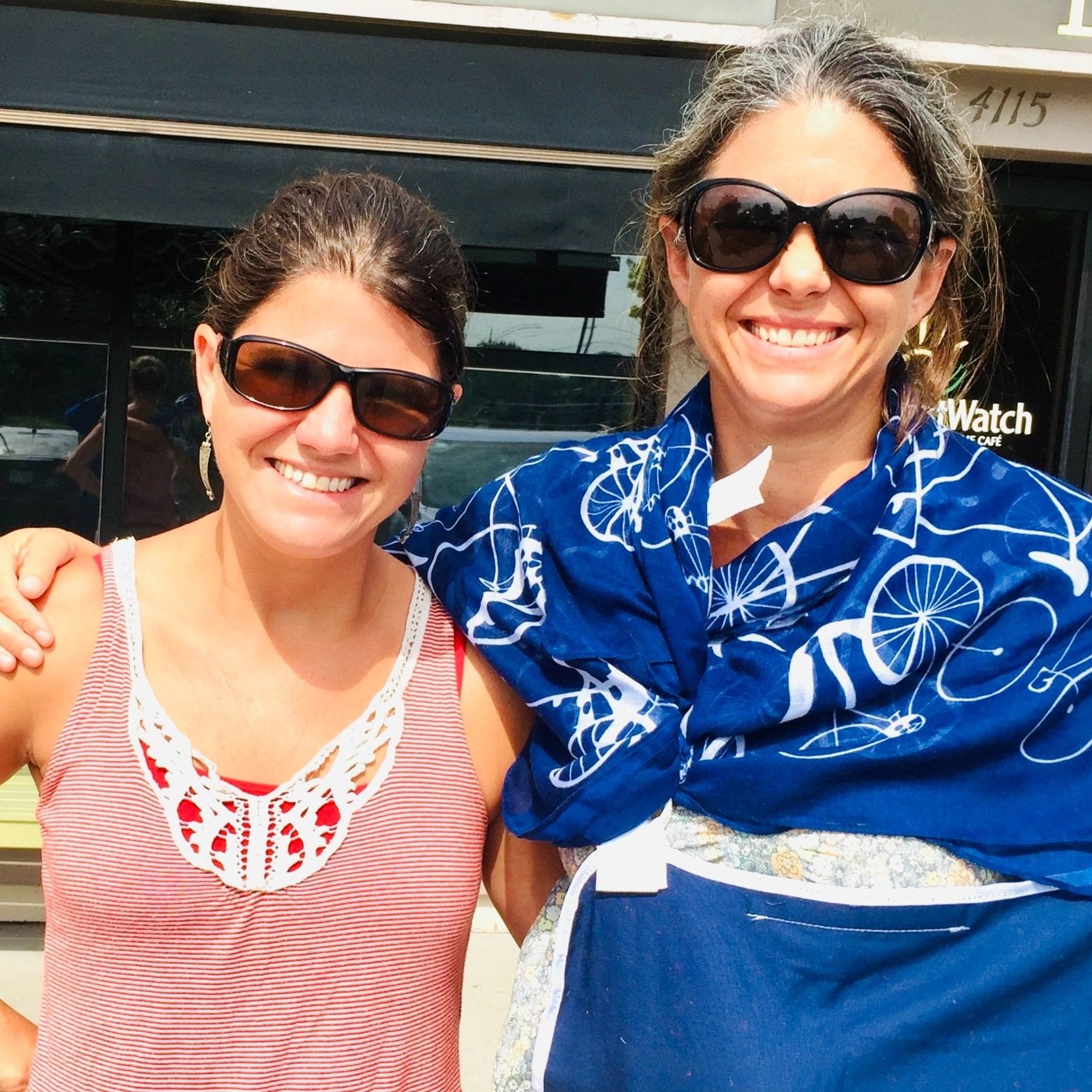Signs and Symptoms of Under Recovery (Part 2 of 3)
Coach Liz in her post-op shoulder sling!
What’s this Podcast About?
In their Recovery Manifesto, Coach Amy and Coach Liz explain the importance of recovery to endurance sport longevity. In this episode, they dive into the dreaded consequences of under-recovery and how to recognize it so you can catch it before it spirals out of control.
Introduction to Signs of Under-Recovery
The biggest threat to your capability in endurance sports is under-recovery, not over-training.
Signs of under-recovery:
injury
poor performance
decreased ability to cope with stress
illness
physical burn out
mental burn out
the dreaded plateau
Injury as a result of under-recovery
Training stresses the body - on purpose - to make it stronger, faster, and go longer and further. But we can't do that when injured. And under-recovery is one of the leading causes of injury.
Researchers found that low recovery days and high training are risk factors for overuse injuries in top-level endurance athletes.
Ristolainen L, Kettunen JA, Waller B, Heinonen A, Kujala UM. Training-related risk factors in the etiology of overuse injuries in endurance sports. The Journal of Sports Medicine and Physical Fitness. 2014 Feb;54(1):78-87. PMID: 24445548.
Injury is the most detrimental to training success and has the longest-term implications. It is the number one thing, as coaches, that we try to prevent. Coach Liz’s hard and fast rule is no injury!
Coach Amy shares how she ignored recovery protocol after her first marathon because of her fear of losing fitness and how that caused a cascade of injuries that plagued her for years.
Early symptoms of injury due to under-recovery
fatigue or strain that is worse than normal workout soreness
pain during or after a workout
strange or new weakness: feeling "floppy" - like you can't control your form.
decrease in range of motion that doesn't alleviate with rest or movement like a walk
pain or irritation with daily activities like going up and down the stairs or sitting at work
Athletes tend to underestimate these feelings, especially new but also experienced ones. Don’t let these symptoms linger or worsen; tell your coach and seek help. Early intervention is critical. The longer you let something linger, the longer it takes to recover.
Knowing what to do when experiencing an acute injury is helpful. When athletes text Coach Amy with pain, she always includes a link to her blog post How to Treat and Acute Injury in her reply.
If you are injured, you can't train consistently and, therefore, can't improve. But even if you stay healthy, under-recovery can lead to underperforming despite the training.
Underperforming Due to Under-Recovery.
There are things outside our control on race day: e.g., weather, a blown tire or equipment failure, a race course running out of water - that will impact our performance.
But we can control one of the biggest factors towards performance: adequate recovery during the training cycle.
There is proof of this direct link between performance and recovery! According to a 2022 article published in the Journal of Functional Morphology and Kinesiology, top performers like overall winners and age group division winners prioritize recovery in their training.
Braun-Trocchio R, Graybeal AJ, Kreutzer A, Warfield E, Renteria J, Harrison K, Williams A, Moss K, Shah M. Recovery Strategies in Endurance Athletes. Journal of Functional Morphology and Kinesiology. 2022; 7(1):22. https://doi.org/10.3390/jfmk7010022
Athletes may be surprised by one of the symptoms of poor performance, which indicates under-recovery because it goes beyond not meeting your targeted pace or time goal. Coach Liz explains that “flat feeling” where you can’t kick it into gear during a race despite training well.
Under-recovery decreases the ability to Cope with Stress.
Under-recovery adds to the stress of training and other life stresses and can become a vicious cycle. Examples: short with a spouse, less tolerance for things you otherwise could tolerate, like standing in line at the grocery store and getting unreasonably irritated - an oversized reaction.
Coach Amy shares how her interpersonal relationships changed during triathlon training so much that her family asked several times, “When is this whole thing over?”
Under-recovery stresses our immune system.
Under-recovery decreases our ability to cope with emotional stress and our immune systems’ ability to fight disease AND increases susceptibility to "bugs" and frequent colds/viruses. It opens up the opportunity for illness. If you are ill, training is challenging. It is easier to prevent under-recovery than to recover from illness!
Under-recovery causes physical burnout.
It is normal to feel fatigued, especially when you are training for endurance events - training under fatigue on purpose, but when training feels like you are going uphill all the time and grinding at your max gear for several weeks, consistently with almost every workout - that is a trend that physical burn-out is occurring.
How to Objectively Track Physical Burn-Out
Rate of Perceived Exertion (RPE)
Heart Rate
Heart Rate Variability (HRV)
Coach Amy explains the Borg Scale for RPE and gives examples of how you can perceive a pace is more demanding than usual or run slower than expected for your exertion level, especially when you are under-recovered.
Example 1: Your RPE is 5 with a 10 min/mile as opposed to your usual 9 min/mile pace.
Example 2: Your RPE is elevated to an 8 when running your average 9 min/mile pace, but typically it is a 5.
Coach Amy’s Favorite Version of the Borg Scale
Coach Liz explains changes in heart rate at rest and during activity that can occur when under-recovered. Changes in heart rate at rest and during activity. A higher resting heart rate than average or a higher heart rate for a given pace or effort with a workout can indicate that it isn’t recovered.
Coach Amy introduces the topic of Heart Rate Variability (HRV). This is a measurement of time between your heartbeats - it reflects what is going on internally with how rested you are, how recovered you are, your body's state of stress, hydration - and how ready your body is to handle the training load. Typically, a lowering HRV is a sign of under-recovery or illness. It is one of the variables your coach can track.
There are multiple ways to test your HRV, but interpret these results cautiously. Many factors come into play, and a professional coach can help you. It is not the holy grail—just a data point to fit in with your fitness picture.
According to a recent study of endurance athletes in the Journal of Functional Morphology and Kinesiology in 2022, athletes reported that they knew they recovered from training or competition when they felt less sore, had more energy, and desired to train again.
These are all subjective measures. We can't outsource those to your watch or techie devices. Use technology to help support your information, not try to force your recovery into the technology.
Braun-Trocchio R, Graybeal AJ, Kreutzer A, Warfield E, Renteria J, Harrison K, Williams A, Moss K, Shah M. Recovery Strategies in Endurance Athletes. Journal of Functional Morphology and Kinesiology. 2022; 7(1):22. https://doi.org/10.3390/jfmk7010022
Under-recovery is not just physical. It is Mental.
Psychological stress - your perceived demands of the training and how you feel regarding irritation, aggression, and anxiety. It may negatively impact performance.
Coach Amy shares a story of an acute bout of mental burnout when training for a 70.3.
Acute burnout is different than chronic burnout. A slower build-up. Dreading workouts when you usually don’t.
Chronic burnout can accumulate and create anxiety, sleep disorders, and memory problems. Coach Liz shares her experience that required a two-year break from endurance sports.
Under-recovery leads to Plateau.
Another phenomenon of under-recovery is the dreaded plateau!
This is a common complaint from athletes, "but I don't understand, I've been doing everything I can, I'm doing all the training, but I'm not getting any "faster, stronger, etc." Many times, the culprit is inadequate recovery.
The initial inclination with a lack of improvement is to do more when rest and recovery are needed.
Summing it up.
There are many subjective and measurable signs that you need recovery. There is typically more than one sign. Be aware of your body and your metrics. This is why you communicate with your Coach about how you are feeling. If you don’t have a coach, use a personal log to keep track of these puzzle pieces.




